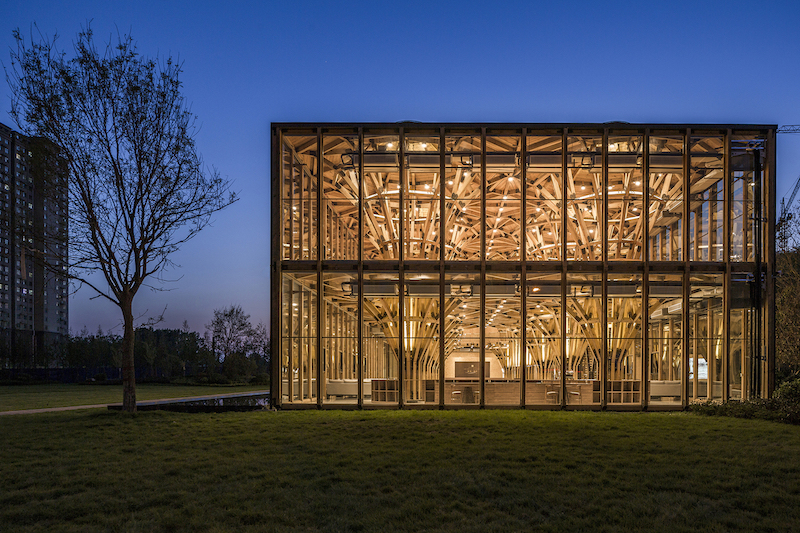Longfu Life Experience Center was Designed to be Disassembled

Construction projects produce a staggering 1.1 billion tons of waste around the world each year, and that figure is expected to double by 2025. A large percentage of that waste is produced at the end of a structure?s lifecycle, when it?s demolished, and most of it ends up in landfills rather than being reused or recycled. But only a very small number of buildings are designed with their own end in mind, with the architect considering how to reduce the negative impact of its lifecycle well ahead of time.
That could change as more architects, designers, and urban planners turn to strategies like ?Design for Disassembly,? which plans for the end of a structure?s usefulness as well as its potential for reincarnation. The goal is to create enduring projects that are ?closed loop,? in which as many of their materials are recovered as possible and adapted for new purposes. Above all, it necessitates looking at the supply chain in reverse, thinking about the ways a building will eventually be disassembled. When the owner of a real estate business decided he needed a new sales center in China?s Henan province, he approached architecture firm LUO Studio looking for an innovative, budget-friendly, and green solution. More specifically, he wanted to target consumers who prioritized sustainable living with a building that was environmentally responsible and made from natural materials ? and he wanted it designed, constructed, finished, and decorated in less than two months.
The Beiji...
| -------------------------------- |
| Dezeen Awards 2020 Interiors show | Dezeen Awards |
|
|
Villa M by Pierattelli Architetture Modernizes 1950s Florence Estate
31-10-2024 07:22 - (
Architecture )
Kent Avenue Penthouse Merges Industrial and Minimalist Styles
31-10-2024 07:22 - (
Architecture )






